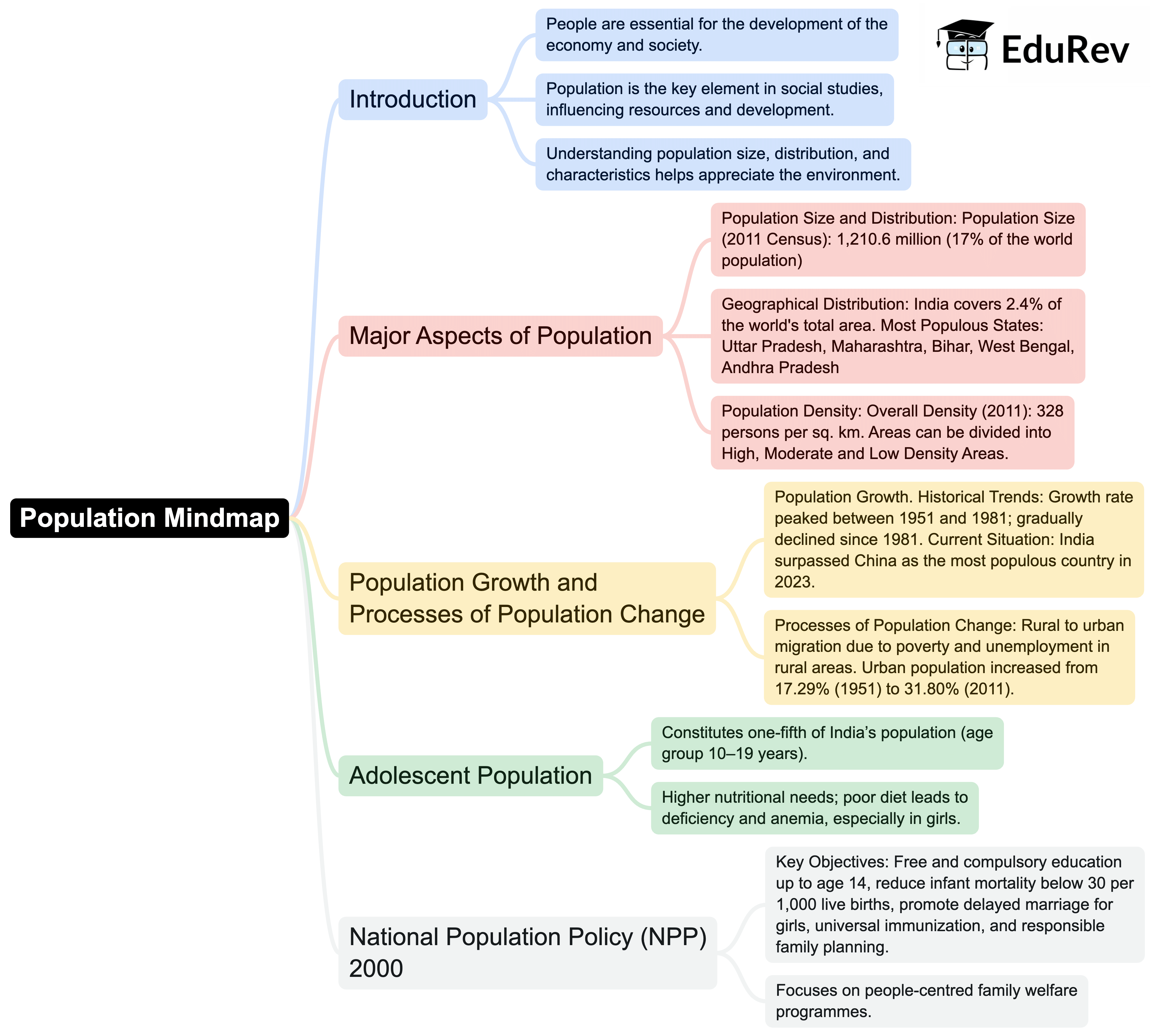Class 9 Exam > Class 9 Notes > Social Studies (SST) Class 9 > Mind Map: Population
Mind Map: Population | Social Studies (SST) Class 9 PDF Download

The document Mind Map: Population | Social Studies (SST) Class 9 is a part of the Class 9 Course Social Studies (SST) Class 9.
All you need of Class 9 at this link: Class 9
|
55 videos|635 docs|79 tests
|
FAQs on Mind Map: Population - Social Studies (SST) Class 9
| 1. What are the main factors influencing population growth? |  |
Ans. The main factors influencing population growth include birth rates, death rates, immigration, and emigration. High birth rates contribute to population growth, while high death rates can decrease it. Immigration increases a population as people move into an area, whereas emigration decreases it when people leave. Other factors such as healthcare, education, and economic conditions also play significant roles in determining these rates.
| 2. What is the significance of population density in geography? |  |
Ans. Population density refers to the number of people living per unit area, commonly measured in people per square kilometer. It is significant in geography because it helps to understand how populated an area is and can indicate the level of urbanization, resource distribution, and potential for social and environmental issues. High population density can lead to overcrowding, while low density might suggest underutilized land.
| 3. How does urbanization affect population distribution? |  |
Ans. Urbanization leads to a shift in population from rural areas to urban centers, significantly affecting population distribution. As cities provide more job opportunities, better services, and improved infrastructure, people migrate towards them. This movement can cause urban areas to grow rapidly, while rural areas may experience population decline. Urbanization often results in increased demand for housing, transportation, and public services.
| 4. What are the implications of an aging population on society? |  |
Ans. An aging population can have various implications for society, including increased healthcare costs, a higher demand for elderly care services, and potential labor shortages. As the proportion of elderly individuals rises, there may also be challenges in pension systems and social security, placing a greater financial burden on the working-age population. Societal attitudes towards aging and the elderly may also shift, impacting cultural dynamics.
| 5. What strategies can be implemented to manage population growth sustainably? |  |
Ans. Strategies to manage population growth sustainably include promoting family planning and education, improving access to healthcare, especially reproductive health services, and encouraging economic development. Implementing policies that support women's empowerment and education can also contribute to lower birth rates. Additionally, sustainable resource management and urban planning can help accommodate growing populations without depleting resources.
Related Searches





















